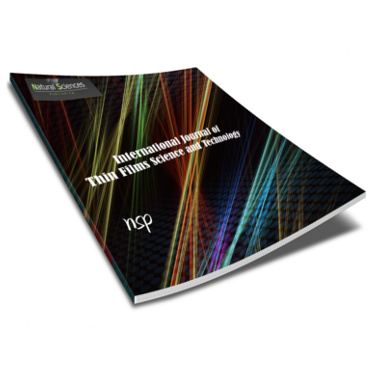International Journal of Thin Film Science and Technology

Abstract
Palladium thin films, with a thickness of about 110 ?, were deposited at room temperature on glass substrates, by electron beam evaporation method, and subsequently annealed at 523, 598, 673, 748, 773, 798 and 823 K for an hour, and then were cool down slowly. The structure and hardness of the thin films were investigated using X-Ray Diffraction (XRD) and Vickers Micro Hardness (MHV) analysis respectively. XRD patterns showed that the structure is amorphous before annealing and as the annealing temperature increases, the structure of Pd thin films become crystallized gradually. The Vickers Micro Hardness modifications of the Pd thin film showed that the heat treatment resulted in the structural compression of the sample and therefore the density increased compared to the preheating temperature. Thus, by heating up to the re-crystallization temperature, the Pd thin film-tensile strength increased, which is itself due to the mechanical behaviour of the material, and has a significant effect on its efficiency. So we realized that the hardness of the thin films is directly affected by annealing temperature.
Recommended Citation
Ghaderi, Faezeh; Samavat, Feridoun; Jafar Tafreshi, Majid; and Kiani, Maryam
(2021)
"The Effect of Annealing Temperature on the Structure and Hardness of Palladium Thin Film,"
International Journal of Thin Film Science and Technology: Vol. 10
:
Iss.
2
, PP -.
Available at:
https://digitalcommons.aaru.edu.jo/ijtfst/vol10/iss2/7

